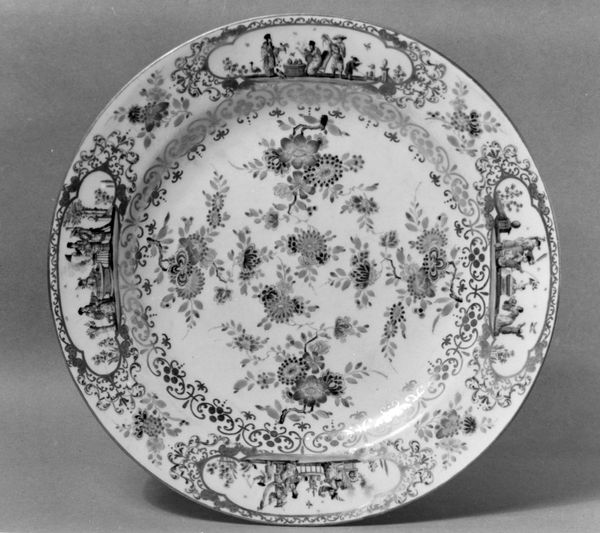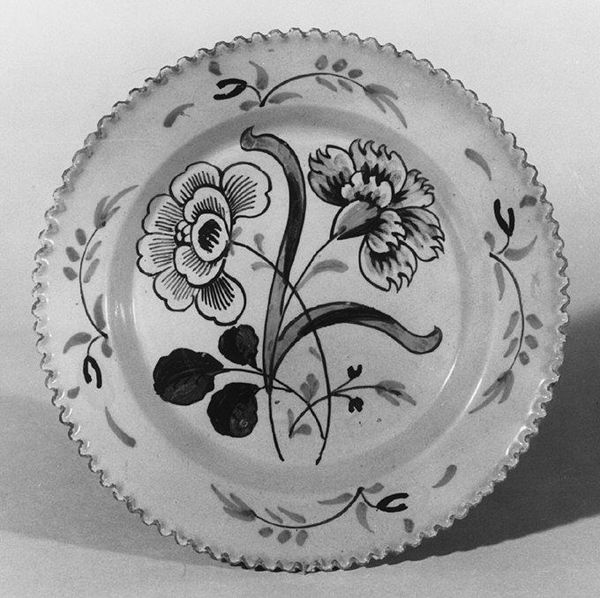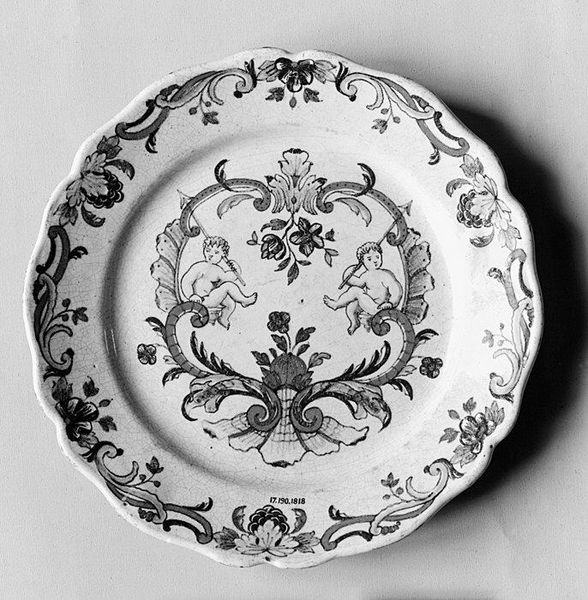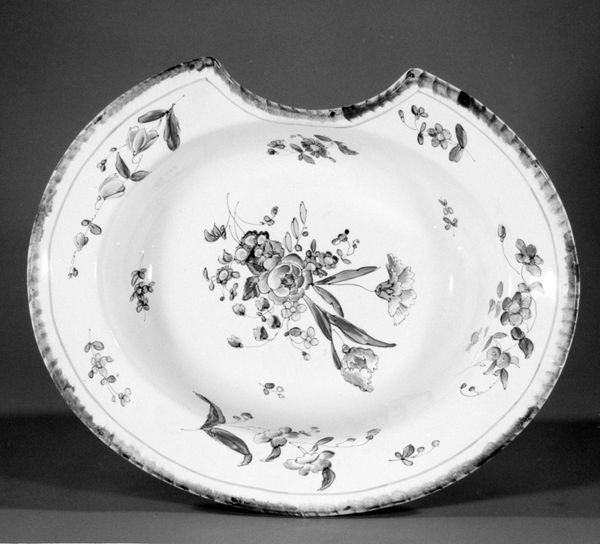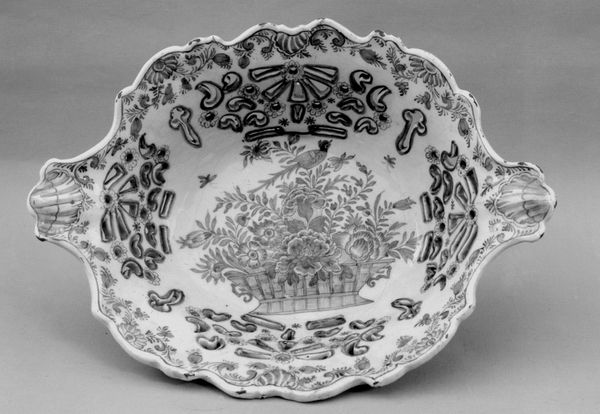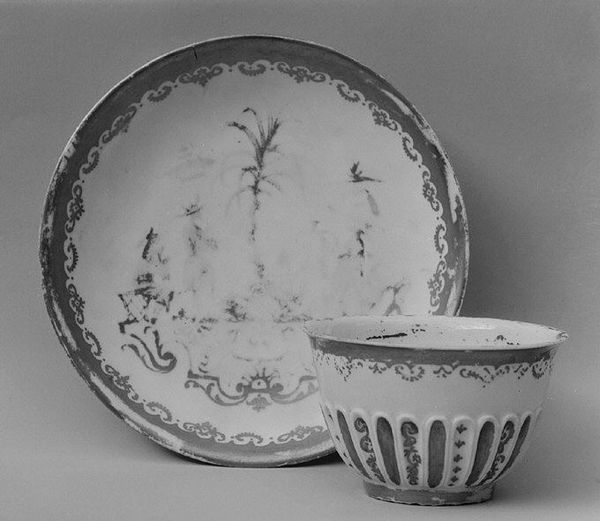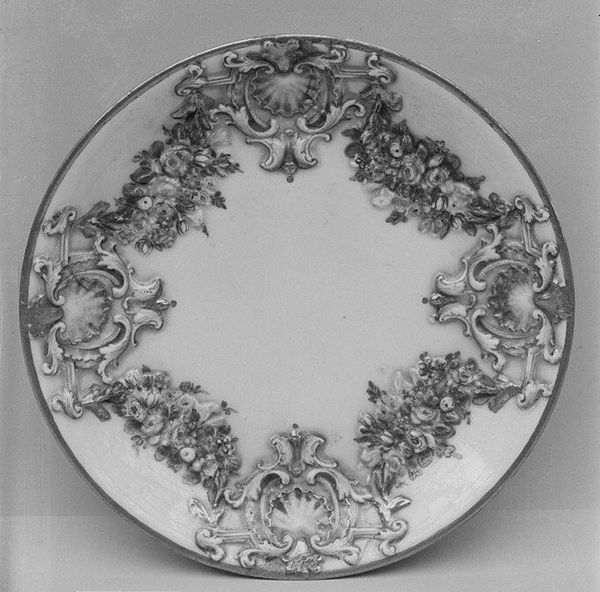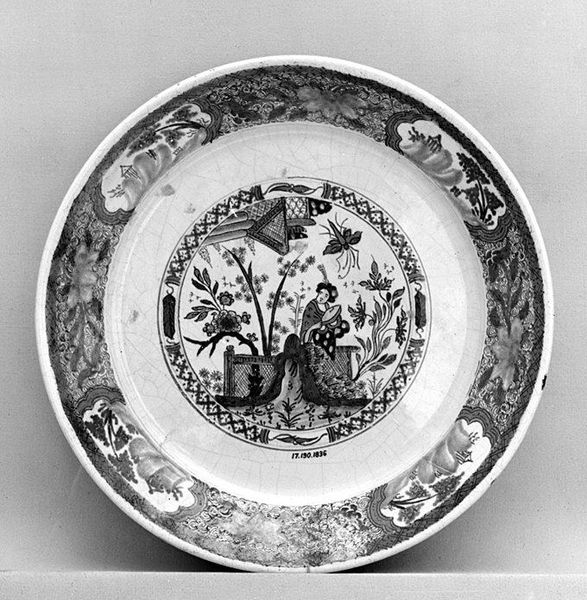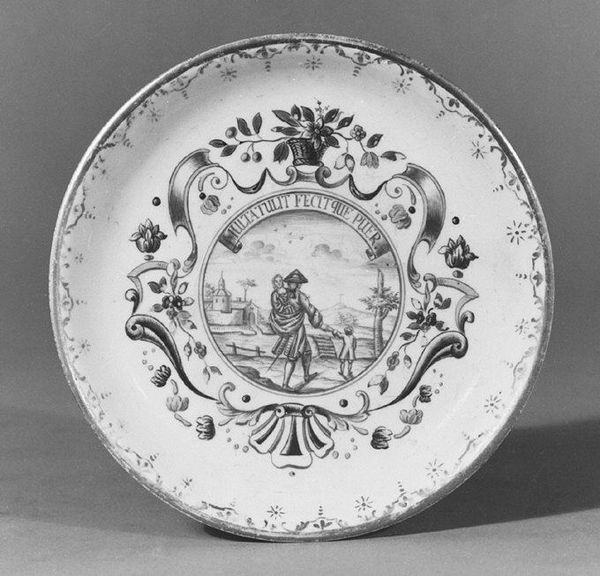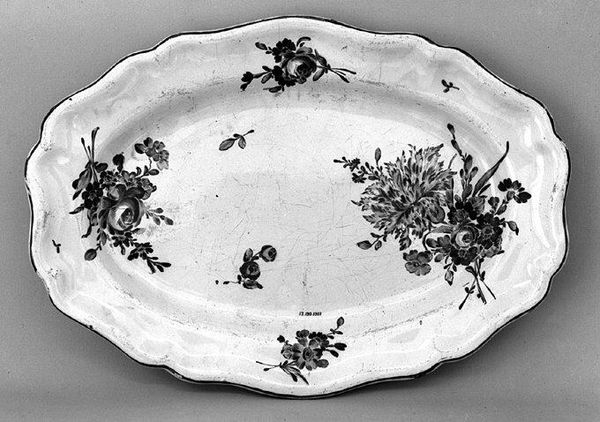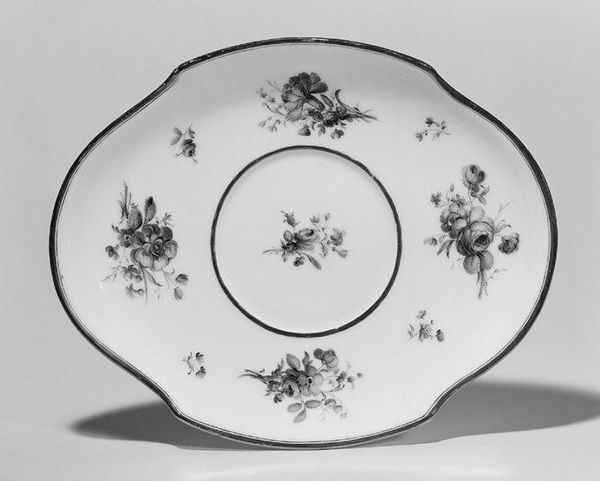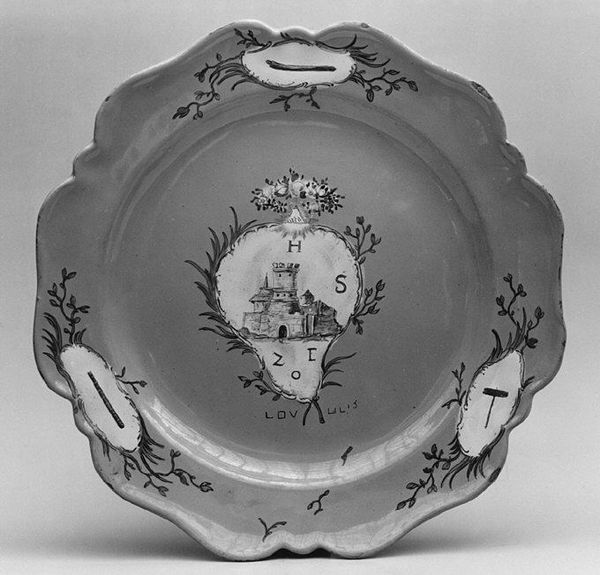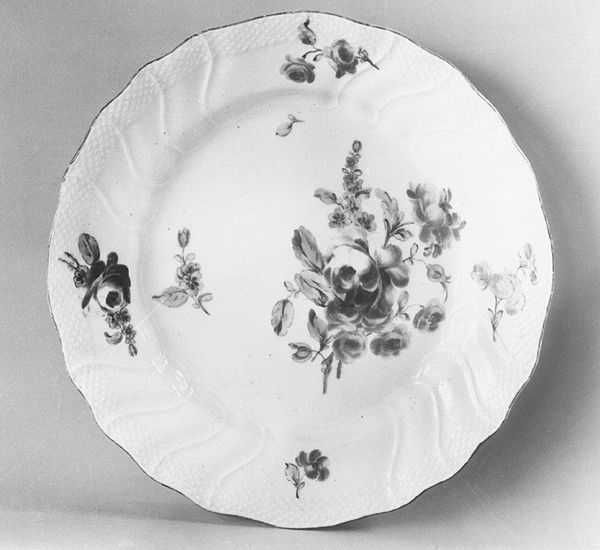
ceramic, porcelain
#
ceramic
#
porcelain
#
decorative-art
#
rococo
Dimensions: Diameter: 4 11/16 in. (11.9 cm)
Copyright: Public Domain
Curator: This lovely object before us is a porcelain saucer crafted by the esteemed Meissen Manufactory sometime between 1710 and 1720. Editor: It’s undeniably delicate; the overall impression is one of almost weightless fragility, like holding a captured breath. It appears quite small, and that intricate design draws you right in. Curator: Indeed, its intimate scale is characteristic of Rococo decorative arts. Observe the detailed floral patterns rendered in a palette that emphasizes the monochrome qualities of blue, with subtle grey details to establish light and form. Notice the organization of these floral elements; they radiate outwards from a central rosette and form concentric fields within the rim. Editor: Rococo emerged in France and rapidly spread, emphasizing asymmetry, elegance, and a lightness that rejected the more imposing styles of the past. The aristocracy consumed luxury objects like this in their homes to showcase elegance, but also cultural refinement and an appreciation of beauty as the highest art form. Can you imagine the settings for such pieces—intimate, softly lit rooms dedicated to leisurely socialising? Curator: The application of linear qualities and floral motifs certainly epitomises that desire. Take note of how the craftsman subtly modulates the brushstrokes to give a textural impression of volume, all whilst working on an unforgiving surface. A surface so slick it barely permits purchase, yet permits light to flood the object. Note that fine line tracing the border of the interior disc. The use of line generates a gentle rhythm, a tempo that draws the eye in circular pattern. Editor: Considering its small size and apparent value, it's probably handled only by the upper crust and under controlled settings at that time. That's pretty exclusive access to beauty! Curator: It allows for us to consider not just aesthetics but function, too. A common usage being drinking tea or coffee in elegant rooms—such venues facilitated networking or the exchange of socio-political ideas. Editor: Yes! The decorative tells the story of its history of who used it and under what circumstances and ultimately why. This isn’t only art; it’s historical testimony! Curator: An elegant, beautiful testimony to history through refined, material art.
Comments
No comments
Be the first to comment and join the conversation on the ultimate creative platform.
